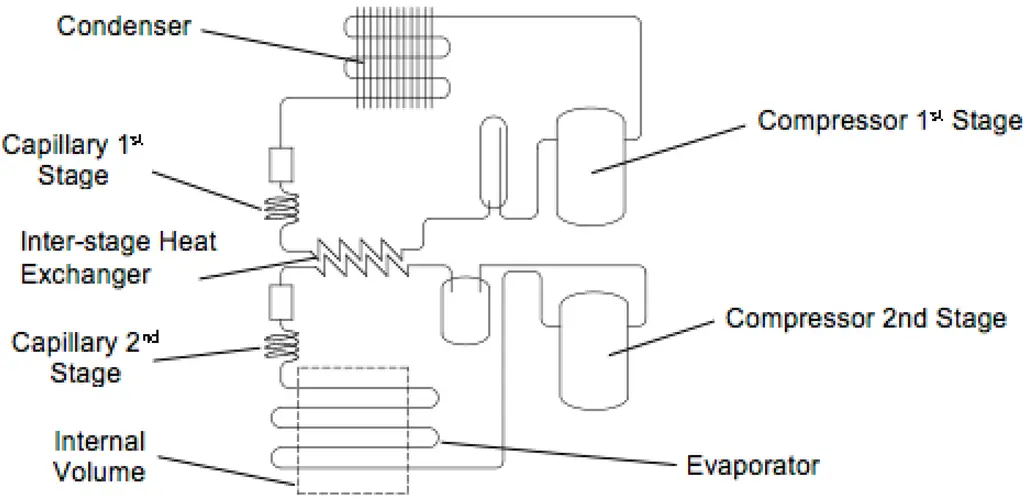Subcooling R22 is a vital aspect of your home’s air conditioning system that you might not be aware of. In this easy-to-understand guide, we’ll explore subcooling, how it relates to R22 refrigerant, and what you can do to keep your AC running efficiently.

Table of Contents
Introduction to Subcooling
Definition of Subcooling
So, what exactly is subcooling? In a nutshell, it’s the process of cooling refrigerant below its condensing temperature, which helps improve the efficiency and performance of your AC system. Why should you care? Well, a properly subcooled system can save you money on energy bills and prolong the life of your AC unit.
Subcooling and R22
Now, let’s talk about R22 refrigerant. It’s a common type of refrigerant used in older air conditioning systems, and it plays a crucial role in the subcooling process. The relationship between subcooling and R22 is important for maintaining optimal performance, and we’ll dive deeper into that as we go along.
Click here for more articles on Subcooling.
Understanding the Refrigeration Cycle
Basic Components
Before we dive into subcooling, let’s quickly review the four main components of your AC system: the compressor, condenser, expansion device, and evaporator. Together, these parts work in harmony to keep your home cool and comfortable.
Phases of the Refrigeration Cycle
There are four main phases in the refrigeration cycle: compression, condensation, expansion, and evaporation. Don’t worry; we won’t get too technical! Just know that these stages are vital for the overall cooling process and that subcooling happens during the condensation phase.
Subcooling in the Refrigeration Cycle
As we mentioned earlier, subcooling plays a significant role in the refrigeration cycle. By cooling the refrigerant below its condensation temperature, it ensures that only liquid refrigerant enters the expansion device, boosting your AC’s performance and efficiency. Sounds like a win-win, right?
Measuring Subcooling for R22
Required Tools
Now, let’s talk about measuring subcooling. You’ll need a few tools for this task, such as a digital thermometer, pressure gauge, and a pressure-temperature chart for R22. These tools will help you gather accurate data to calculate subcooling levels.
Step-by-Step Process
- Attach pressure gauge
- Measure high-side pressure
- Convert pressure to temperature
- Measure liquid line temperature
- Calculate subcooling
Follow these steps, and you’ll have a good idea of your system’s subcooling level. It’s crucial to monitor this to ensure optimal performance.
Optimal Subcooling Range for R22
So, what’s the ideal subcooling range for R22? Experts typically recommend a range of 10 to 15 degrees Fahrenheit. If your system’s subcooling level falls within this range, you’re in good shape! If not, you may need to make some adjustments to improve efficiency and performance.
Troubleshooting Subcooling Issues
Common Causes of Low Subcooling
Low subcooling can be a bit of a headache. Some common causes include undercharged refrigerant, non-condensable gases, or a restricted expansion device. Identifying the culprit and resolving the issue will help get your AC back on track.
Common Causes of High Subcooling
On the flip side, high subcooling can also cause problems. Overcharged refrigerant, restricted liquid lines, and dirty condensers are typical culprits. Addressing these issues will help your AC system run more efficiently.
Resolving Subcooling Problems
To tackle subcooling issues, you may need to adjust the refrigerant charge, clean or replace components, or ensure proper system maintenance. Regularly checking and maintaining your AC system can save you time, money, and frustration in the long run.
Transitioning from R22 to Alternative Refrigerants
Reasons for Transition
It’s important to note that R22 is being phased out due to its environmental impact. So, what does that mean for you? It means you might want to consider transitioning to alternative refrigerants that are more eco-friendly.
Alternative Refrigerants
Some popular alternatives to R22 include R410A, R407C, and R32. These refrigerants are more environmentally friendly and are becoming the new industry standard.
Converting Existing Systems
If you’re considering making the switch, you’ll need to retrofit your existing system or upgrade to a new one. Adjusting subcooling levels for new refrigerants is also crucial for maintaining optimal performance.
Safety Precautions
Remember, safety first! Proper handling of refrigerants and safe disposal of R22 are essential when transitioning to alternative refrigerants. Be sure to follow all safety guidelines and regulations.
Conclusion
In conclusion, understanding the importance of subcooling for R22 systems, troubleshooting and maintaining optimal subcooling levels, and transitioning to environmentally friendly refrigerants are all key aspects of keeping your home cool and comfortable. By staying informed and proactive, you can ensure your AC system stays efficient, saving you money and reducing your environmental impact.